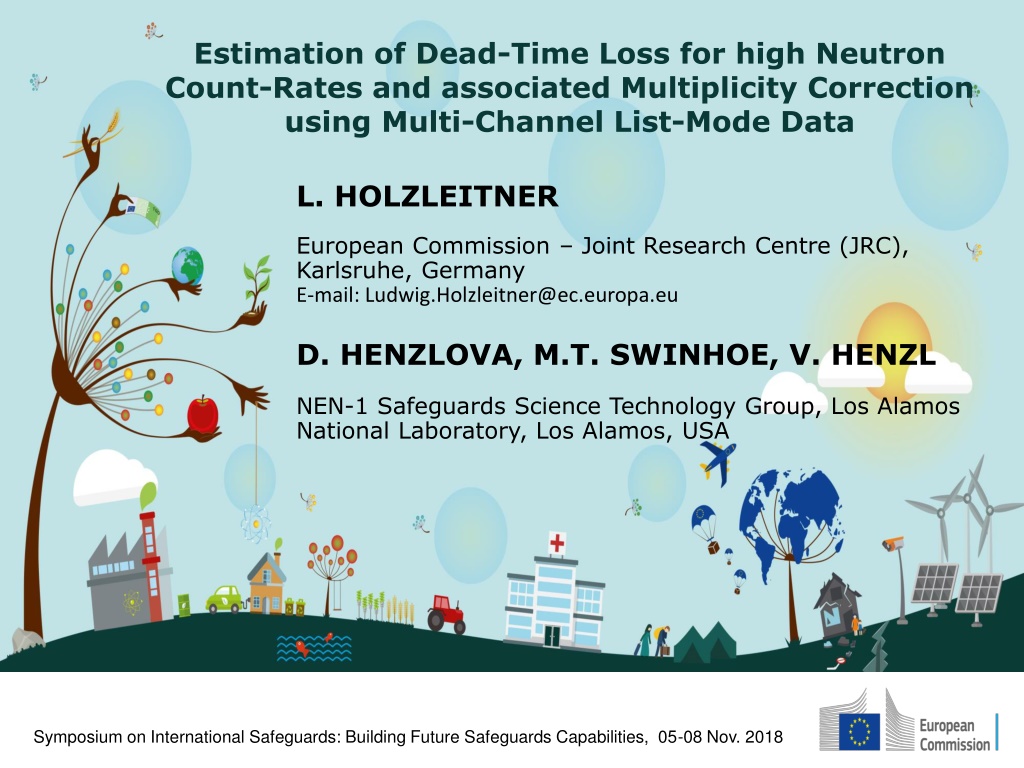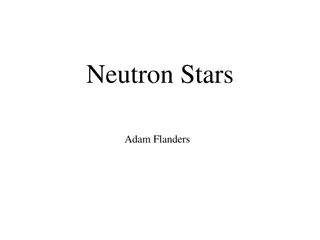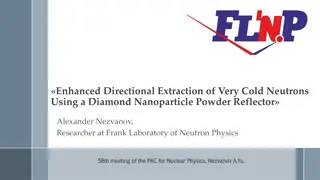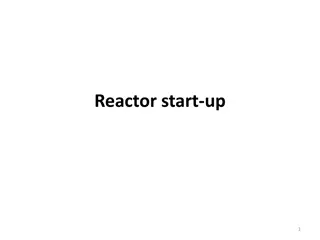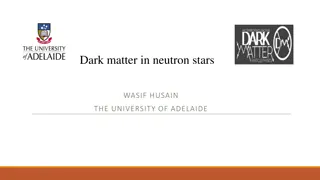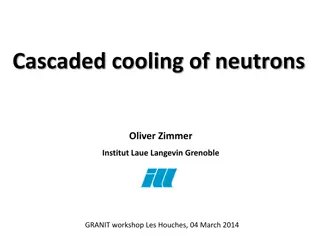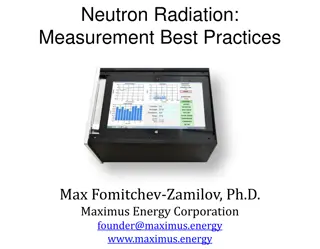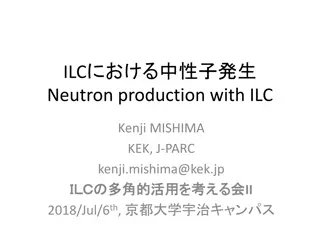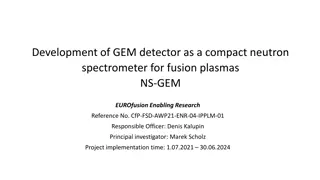Estimation of Dead-Time Loss for Neutron Count-Rates
This study discusses the estimation of dead-time loss for high neutron count-rates and the associated multiplicity correction using multi-channel list-mode data. The numerical method for high count-rate dead-time correction in neutron multiplicity counting is described, focusing on the use of multi-channel list-mode recorders for data analysis. The process involves estimating lost pulses on channels, dead-time probabilities, and correcting multiplicity histograms. Results indicate precise estimation of lost pulses and reasonable correction of Singles/Doubles/Triples. Further refinement is needed for multiplicity correction.
Download Presentation

Please find below an Image/Link to download the presentation.
The content on the website is provided AS IS for your information and personal use only. It may not be sold, licensed, or shared on other websites without obtaining consent from the author.If you encounter any issues during the download, it is possible that the publisher has removed the file from their server.
You are allowed to download the files provided on this website for personal or commercial use, subject to the condition that they are used lawfully. All files are the property of their respective owners.
The content on the website is provided AS IS for your information and personal use only. It may not be sold, licensed, or shared on other websites without obtaining consent from the author.
E N D
Presentation Transcript
Estimation of Dead-Time Loss for high Neutron Count-Rates and associated Multiplicity Correction using Multi-Channel List-Mode Data L. HOLZLEITNER European Commission Joint Research Centre (JRC), Karlsruhe, Germany E-mail: Ludwig.Holzleitner@ec.europa.eu D. HENZLOVA, M.T. SWINHOE, V. HENZL NEN-1 Safeguards Science Technology Group, Los Alamos National Laboratory, Los Alamos, USA Symposium on International Safeguards: Building Future Safeguards Capabilities, 05-08 Nov. 2018
Numerical Method for High Count-Rate Dead-Time Correction in Neutron Multiplicity Counting using Multi-Channel List-Mode Recorders A neutron detector in safeguards has a body of polyethylene with a cavity for the sample. Around it, gas proportional counters, often 3He tubes, are embedded in the polyethylene body. Traditional neutron counters/detectors sum up the signals from different preamplifiers, possibly using a de-randomizer. Multi-channel list mode recorders provide both accurate time and channel information of recorded signals. Recording signals from individual preamplifiers using such devices provide additional possibilities for data analysis and other advantages. One of it is advanced dead-time correction as described here. MC list-mode Counter Multiplicity Evaluation Data-Link De-Randomizer replaced by Multi-Channel List-Mode recorder Preamplifier Sample cavity 3He Tube Office Detektor Polyethylene Symposium on International Safeguards: Building Future Safeguards Capabilities, 05-08 Nov. 2018
Numerical Method for High Count-Rate Dead-Time Correction in Neutron Multiplicity Counting using Multi-Channel List-Mode Recorders Lost pulses on channels are estimated from observed ones on all other channels. This is done simultaneously (using matrix equat.) since probabilities of pulse arrival are interlinked! Dead-time loss ??? can be estimated by repeatedly solving the matrix - eqn. 7 for evert time ? and for every meaningful (means non-zero) right hand train. second, estimated pulse ?1?1?1 1 ?1 ??? ?1?1?1 1 ?1 ?2?2?2 1 ?2 1 ?1?1?1 1 ?1 1 ? 1 ?2?2?2 1 ?2 ?1? ?2? ?2?2?2 1 ?2 ??? = ? 2 (eqn.7) ??? ?????? 1 ?? ?????? 1 ?? ?????? 1 ?? 1 ??? ? ? ? global time of the detector ??(?) count is a observed pulse accounted for at channel i and time t. ?? time at certain channels from a specific event (leading pulse) ??relative efficiency of channel i where of course ???= 1. ???? probability (betw. 0 - 1) for losing a pulse at channel ? has as time ??, time from the last recorded pulse on channel i. Symposium on International Safeguards: Building Future Safeguards Capabilities, 05-08 Nov. 2018
Numerical Method for High Count-Rate Dead-Time Correction in Neutron Multiplicity Counting using Multi-Channel List-Mode Recorders Dead-time probabilities ???? can be estimated using a iterative process involving eqn. 7. Multiplicity histograms can be corrected by sorting-in lost pulses using statistical methods. This results in corrected Singles / Doubles / Triples. MCNP simulations show that the estimation of lost pulses is quite precise; The results for multiplicity correction by sorting-in of lost pulses are reasonable, however it still needs some refinement. (a) Original count rate 0.52 M c/s (b) Original count rate 1.05 M c/s (d) Original count rate 4.19 M c/s (c) Original count rate 2.09 M c/s Symposium on International Safeguards: Building Future Safeguards Capabilities, 05-08 Nov. 2018
Numerical Method for High Count-Rate Dead-Time Correction in Neutron Multiplicity Counting using Multi-Channel List-Mode Recorders Rossi-Alpha distribution first (4.5 s) from MCNP simulation Advantage over other methods: Using multi-channel list-mode recorders: Suitable for very high count-rates No prior calibration necessary: is self- calibrating from measurement data. Compensates for double pulsing is as long as it does not exceed dead-time loss. Double-pulsing correction could be built in future using a similar technique. Transfer of channel-information provides increased diagnostics capabilities Original count rate 1.05 M c/s: Symposium on International Safeguards: Building Future Safeguards Capabilities, 05-08 Nov. 2018
Numerical Method for High Count-Rate Dead-Time Correction in Neutron Multiplicity Counting using Multi-Channel List-Mode Recorders Thank you! Questions? Ludwig.Holzleitner@ec.europa.eu Symposium on International Safeguards: Building Future Safeguards Capabilities, 05-08 Nov. 2018
